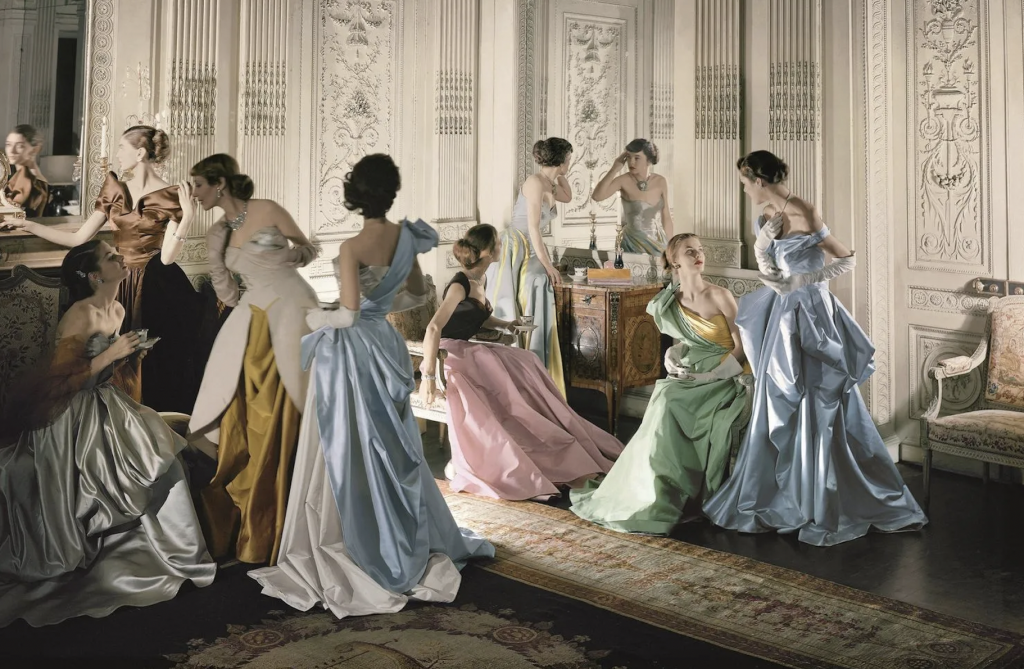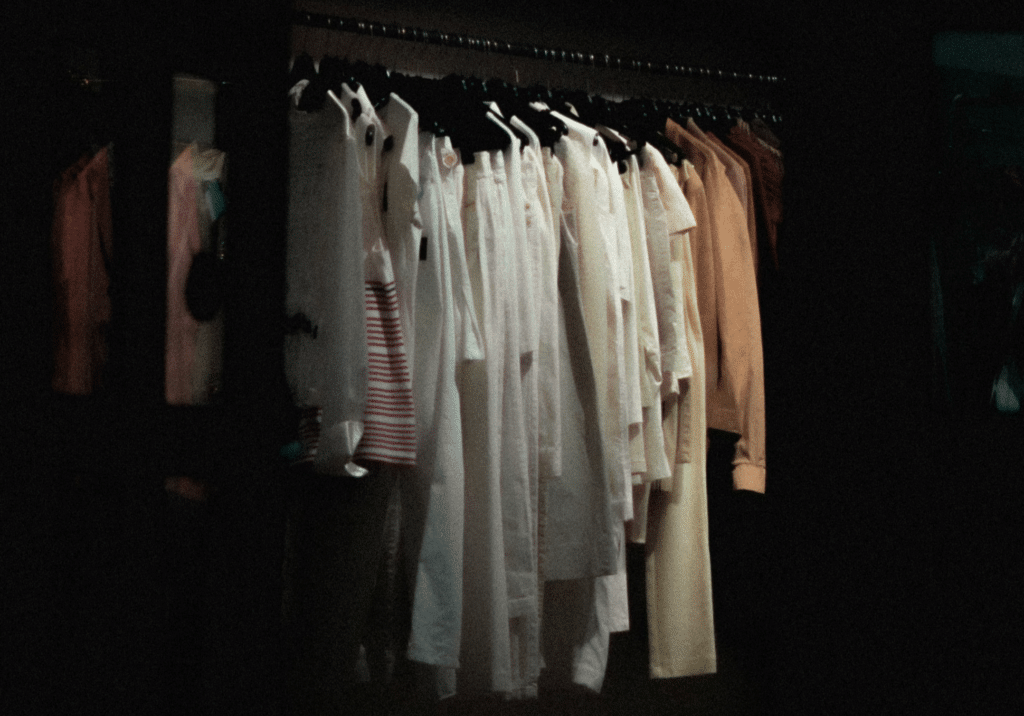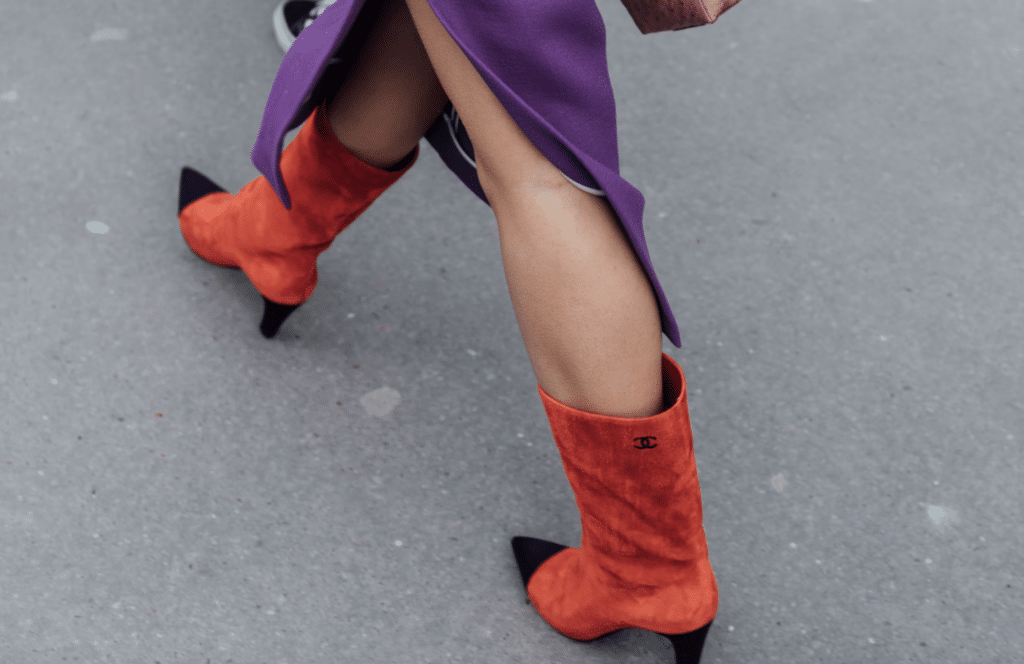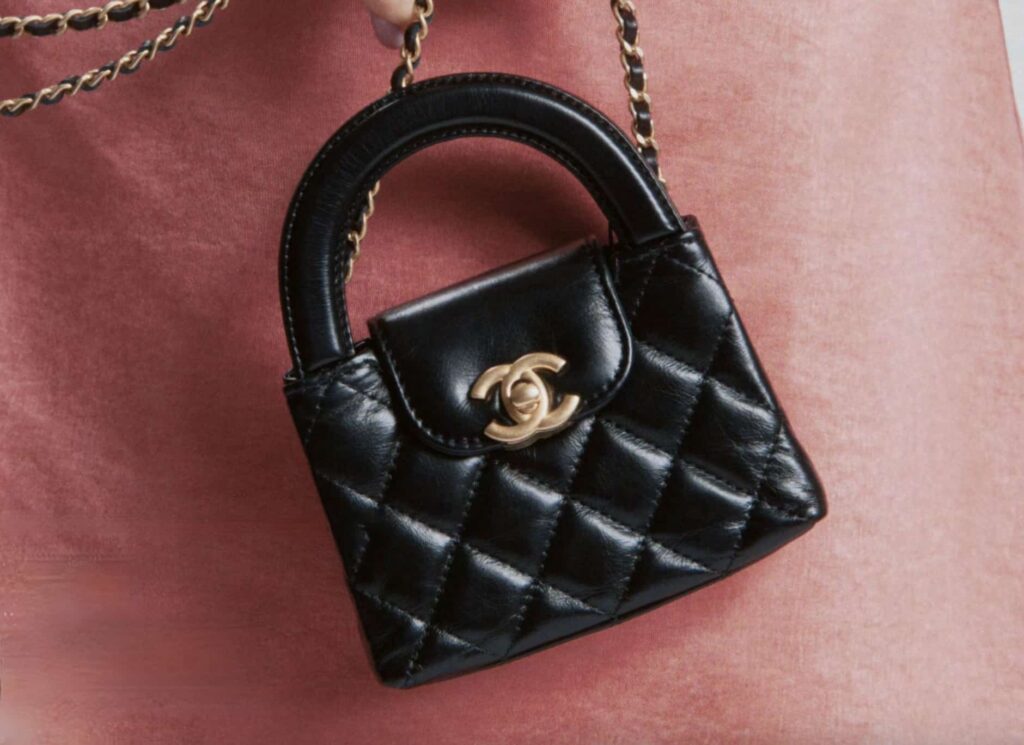Big news came two years ago when The Weinstein Company (“TWC”) announced that it had struck a deal to reboot the legendary house of Charles James, the late British-born couturier known for his revolutionary ball gowns and innovative tailoring. Something of a forgotten treasure, almost completely lost on modern-day fashion fans, the house received renewed attention as the subject of “Beyond Fashion,” a retrospective at the Metropolitan Museum of Art’s Anna Wintour Costume Institute and the subject of the institution’s annual Gala in 2014.
However, despite what was lauded as a truly momentous announcement at the time, we have since heard virtually nothing about the status of TWC’s resurrection of the Charles James brand. The radio silence raises questions as to what has actually occurred behind the scenes, and many have harbored suspicions as to what has caused the seeming postponement, if not utter abandonment, of the much-anticipated project. It seems these concerns are well founded: as it turns out, an intense – yet largely guarded – battle for the house is currently underway.
The Fashion Law has taken the first in-depth look at the state of the Charles James revamp project by TWC. As part of the exclusive, in-depth study, we look at the formerly uncovered players vying for the right to resurrect this groundbreaking fashion house and the corresponding legal rights at stake in the bitter war that is playing out in trademark offices across the world.
Halston-Meets-Hollywood
The rebuilding of Charles James certainly makes for an ambitious project, particularly given the sleepy status of the brand in 2014. Despite the odds, TWC – the American film company launched by film executives, Harvey Weinstein and his brother, Bob – seemed as though it may just be well-connected and well-funded enough to execute such an endeavor. Not exactly a stranger to the fashion industry, Harvey Weinstein’s wife, Georgina Chapman, launched red carpet mainstay label, Marchesa in 2004.
According to the Australian Financial Review, Weinstein invested an “unknown sum” in that venture. There are also the various fashion film and television projects with which TWC has been involved, such as Project Runway. The film company also acquired rights in the French-language biopic “Yves Saint Laurent” in March 2013.
Most noteworthy, however, is Halston. TWC and private equity firm Hilco Consumer Capital, LLC joined to acquire the storied design house – one that has suffered quite notably as a result of a series of ill-fated corporate maneuvers that began even before founder Roy “Halston” Frowick died of complications from AIDS in 1990. As the New York Times noted in 2011, since Halston’s death, “the rights to license and make Halston products have been bought and sold five times, and seven fashion designers have failed to breathe new life into the company.” Unfortunately, the TWC/Hilco dual-acquisition proved to be no different.
Sure, Weinstein tapped a slew of famous names to pioneer the project. Actress Sarah Jessica Parker, who joined in 2010 as president and chief creative officer; Jimmy Choo co-founder Tamara Melon joined as a board member; celebrity stylist Rachel Zoe – who is nothing if not a poster child for the Halston ethos; designers Marco Zanini and Marios Schwab; and Weinstein, of course, were brought on board.
However, as a result of poor reviews of the collections, a larger industry reappraisal of the merit of the celebrity-as-fashion-designer, the impact of the Great Recession, and what several sources of the Daily Beast said was “poor company management,” the project tanked somewhat swiftly.
The press had a field day. Publications like Women’s Wear Daily, New York Magazine, and those similarly situated vigilantly tracked the rumors surrounding each individual’s departure from the sinking ship known as TWC’s Halston, confirming them as they occurred. By late 2011, less than two years later, all of the aforementioned figures were gone.
Charles James: Another Venture Gone Awry?
This is the less-than-auspicious background against which TWC was operating when it confirmed that it had “agreed to license, with an option to buy, luxury fashion brand Charles James from the iconic designer’s estate” in May 2014. While garments may go in and out of style with considerable frequency in the upper echelons of the fashion industry – many trends being nary long-lost memories but a few seasons later – fashion figures’ missteps tend to hang about.
Just ask John Galliano or Christophe Decarnin or Kanye West, for instance, all of whom have been branded disfavorably in one way or another by the fashion industry. It often takes something short of a miracle – or a rehab stint, a handful of noteworthy industry shake-ups, and a few years – for such reputations to dissolve. In this way, TWC’s failed attempt to restore Halston was certainly not lost on anyone (except maybe Charles James’ children). Naturally, most responses to the revelation of the impending revamp of the Charles James brand were less than confident.
Coincidentally – or not – rumors of a TWC acquisition of the Charles James house coincided with the annual Metropolitan Museum of Art Anna Wintour Costume Institute Gala in May 2014 – the James-themed gala. A day later, speculation was confirmed in a press release issued by TWC, which stated, in part: “TWC will aim to utilize their international reach to help reintroduce the brand to the high-end consumer market.”
Not terribly unlike the case of TWC’s attempted Halston revamp, the re-invention story of Charles James commenced with Weinstein, himself, making a grand declaration regarding the project and publicly lauding the history and the DNA of James and his once-remarkable house.
Weinstein announced in a statement in May 2014: “Charles James was one of the most incredible couturiers in the history of fashion and this label deserves to be a household name in the same ranks as Chanel, Dior, and Oscar de la Renta. There isn’t a single designer in high fashion who wouldn’t name him as a major influence. We are beyond thrilled to be spearheading the revival of this brand and bringing it back to the world’s finest retailers.”
Weinstein is undoubtedly correct in a number of regards. However, “deserving” to be a household name and actually becoming one are two very different things.
“We’re thrilled to help bring the Met exhibit to museums around the country and to bring the spirit and style of Charles James back in to the fashion marketplace,” Georgina Chapman (Weinstein’s wife), added. Note: Save for Charles James: Beneath the Dress, The National Arts Club’s July 2014 exhibition of drawings from the private collection of R. Couri Hay, with which TWC had no official involvement (aside from Weinstein and Chapman’s attendance at the exhibition opening), we have yet to see any such action come into fruition.
Though despite TWC’s less-then-stellar track record in regards to brand revamps and the highly dormant state of the Charles James brand, which was almost completely unknown to the vast majority of the population in 2014, a few factors could have indicated potential success for the project. Maybe most significant is the Costume Institute’s “gift for bringing moribund labels back to life,” as aptly noted by Daily Beast columnist Raquel Laneri.
“A couple years before the 2014 James retrospective, it helped relaunch the house of Elsa Schiaparelli, a contemporary of Coco Chanel whose surrealist inventions (a lobster dress made with Salvador Dalí, a hat shaped like a shoe) the Met juxtaposed with Miuccia Prada’s,” Laneri further held.
However, even the power of the fashion industry’s most celebrated night and its most venerable leaders has not proven a fervent enough force to revive the house of Charles James. While James’ legacy, including the title of “America’s First Couturier” and fans that included masters like Cristóbal Balenciaga and Christian Dior, has sustained itself amongst historians and devoted fashion buffs, alike, the Charles James name is, even following the 2014 Metropolitan Museum of Art exhibit, simply lost on most.
In the spring of 2015, less than a year after the initial confirmation of the impending resurrection project, came the widespread speculation that Zac Posen, arguably one of the young figures closest to observing couturier-like sensibilities to come of out New York in the past decade, was to be named creative director for the modern house of Charles James. TWC was quick to shoot down such rumors.
The company released a statement in early March 2015, saying: “Reports that Zac Posen has been chosen to join the creative team in relaunching the Charles James fashion brand are not confirmed. We have no further information at this time.” When asked about his involvement with the project, which the New York Times’ Vanessa Friedman reported was to be in a “consultancy” capacity, Posen had “No further comment.”
All the while, Chapman; her Marchesa co-founder, Keren Craig; and Chapman’s brother, Marchesa CEO Edward Chapman, were brought on as creative consultants for the house, as confirmed in a statement issued by TWC. This is the last publically disclosed development in connection with the Charles James resurrection.
As for the fashion press, it has remained almost completely mum on the matter, save for a recent note from Women’s Wear Daily, which held that Weinstein’s “much talked-about plans to revive the Charles James fashion label haven’t been realized.” WWD made mention of this in connection with an announcement that the TWC has taken on a new project: televising this year’s Council of Fashion Designers of America Awards, which will be telecasted for the first time ever in June.
A Valuable Licensing Agreement or a Bad Deal?
As widely reported, TWC entered into a licensing agreement of sorts with James’ “estate” at some point in 2014 preceding the May 2014 Met Gala. Such licensing arrangements typically involve the sale/transfer of the right(s) to commercially exploit or develop the name of a brand to a party other than the original intellectual property holder and/or his heirs.
For example, consider, the Halston case. Each time a new group of investors has entered into the picture and attempted to revamp the brand, what they have paid for upfront is the right to utilize Halston’s intellectual property, namely, the house’s trademarks (some of which have been in effect since the 1970’s) and maybe some copyright registrations, from the previous owner. Trademarks are the asset of primary value at this point for the Halston brand (and for many brands); without authorization to use the trademark protected brand name, such a deal would be without much merit.
With this in mind, it is significant that by the end of James’ life, his business had fallen upon significantly hard times. In connection with an interview with R. Couri Hay, the society publicist, columnist, and owner of a namesake public relations firm, and friend to the late James, columnist Véronique Hyland wrote for New York Magazine’s fashion site, The Cut, in July 2014:
Despite James’s cachet within socialite circles, his public profile dipped sharply in his later years — a fact, Hay says, that was deeply upsetting to him. At one point, he sent a transparent blouse to Henri Bendel, but they rejected it. “Finally, what happened was people caught on,” Hay says. “And who did it take to do it? It took a museum. It took the art world. And so why was Charles forgotten? No advertising. No big conglomerate bought his name. Nobody kept the legend alive, because they couldn’t make any money out of it … How many times has Marc Jacobs gone bankrupt and been saved? But there was no LVMH to save James.”
Blair Sabol, writing for New York Social Diary in 2014, similarly noted: “I wonder about that business deal with James’ surviving children since he was said to be estranged from his children and just about everyone else at the end of his life.”
As such, it hardly comes as a shock that in 2014, the house of Charles James was completely dormant, just as it had been since he died from pneumonia some 36-years prior. In 2014, no one held federal trademark rights of any kind in the Charles James name; at that time, there were not any federal trademark registrations in connection with the Charles James brand name.
And even if there were, they would arguably be invalid, at least in the United States, as the house had not used the name in connection with the sale of anything (or in legal terms, had not “used the mark in commerce”) for 36 years – likely even longer, as it seems that the brand had been disbanded even before that point.
Assuming that at some point James did, in fact, enjoy trademark protection in connection with his brand name (common law or otherwise), his estate lost out on those rights before 2014 because it was not being used in commerce, thereby failing to satisfy ongoing use-based maintenance requirements to ensure the ongoing existence of such rights under U.S. law.
The Foreshadowing of Another Failed Venture?
With two years under its belt and the backing of the Metropolitan Museum of Art and the fashion industry’s most important editor, Anna Wintour, who serves as the chair of the annual Met Gala, on its side, TWC has not yet made good on its now-illustrious Charles James revamp aspirations. This is almost certainly because there is far more at play than TWC or the fashion media has let on, namely, an array of rather significant issues surrounding the intellectual property rights in the Charles James name.
It appears as though TWC’s licensing deal with the James children was not nearly as substantial as one may otherwise expect. What exactly did TWC gain from the estate of Charles James in terms of a license, you ask? Well, it is unlikely that TWC obtained any existing rights of publicity in connection with the Charles James name since James died in New York, a state where publicity rights are not descendible.
As for intellectual property rights, it seems that TWC licensed next to nothing, as at the time the deal was announced, the estate of Charles James – the party with which TWC claims it entered in an agreement – did not hold a single federal trademark or copyright registration in the U.S. (or anywhere else in the world).
For clarity’s sake, it appears that the estate of Charles James is more accurately identified as his two children: Charles B.H. James and Louise D.B. James, who, as the New York Post reported in May 2014, “were among the VIPs touring the Met’s exhibition of their dad’s work, ‘Beyond Fashion,’ on its opening day.” The “grown children” had reportedly “met with movie mogul Harvey Weinstein earlier in the day after reaching a deal with him to relaunch James’ label and expand the brand.”
Interestingly, just prior to the May 2014 Met Gala, the James children experienced a sudden desire to spearhead a revamping of their deceased father’s similarly deceased brand. Seemingly prompted by Weinstein’s interest, the siblings sprang into action and filed their first trademark application just fifteen days before TWC announced that it had entered into a licensing deal with the James estate on May 6, 2014.
The James children later filed several additional applications in the U.S., Canada, Europe and Asia over the course of the month of May. We assume that all of these trademark applications and potential regsitrations are slated to be part of the licensing arrangement signed with TWC, along with a right of purchase. The terms of the agreement between TWC and the James children have not been disclosed but sources estimate that the buying option was priced in the mid to single digit millions (USD), keeping in mind that in 2007, TWC and Hilco Consumer Capital, LLC agreed to pay as much as $22 million to acquire Halston trademarks, while the brand was still in a dormant stage.
However, things certainly have not unfolded as expected. To date, not a single application filed by the James children either in the U.S., Canada, Europe, or Japan has resulted in registration, as their applications have been either suspended or rejected due to conflicts with a number of prior existing applications or registrations for the Charles James name. It turns out, TWC was not the only company aiming to revive the Charles James brand; another company beat them to it.
Enter: Luvanis S.A., a Luxembourg-based investment company, which had filed and/or registered the Charles James trademark in several jurisdictions before the James children filed their first trademark application.
Luvanis, which is headed up by French entrepreneur Arnaud de Lummen, is best known for its focus on buying, incubating and reviving “long-dormant luxury brands,” as Forbes put it several years ago. Lummen, who reintroduced Vionnet ready-to-wear in 2006, later off-loading the label, also revived the 19th-century trunk brand, Moynat, before selling it off to Groupe Arnault (the holding company of LVMH chairman, Bernard Arnault).
Lummen was also famously involved in the revival of Paul Poiret (another brand subject of a retrospective at the Metropolitan Museum of Art, albeit years ago in 2007), which Luvanis sold last summer to Shinsegae International, a premium luxury brand retailer listed on the Korean Stock Exchange.
There is a War Going On
The records of various trademark offices, such as the U.S. Patent and Trademark Office (“USPTO”) and European Union Intellectual Property Office (“EUIPO”), reveal that an intense trademark battle between Luvanis and the James children has been underway for the last two years. Where is the war standing today, you ask?
Well, in the U.S., the USPTO’s database informs us that in February 2015, Luvanis was awarded one trademark registration covering leather goods, such as handbags and purses. Luvanis maintains three other pending trademark applications (including one filed in 2008), which extend to goods, such as perfumes and clothes. While these applications precede the James’ applications, they are still subject to a combined opposition proceeding before the Trademark Trial and Appeal Board (“TTAB”), initiated by the James children, who claim to be the lawful holders of the trademark rights in the Charles James name.
The James children’s applications – one filed with the USPTO in April 2015 and another in May 2015 – have been suspended until the TTAB issues a decision in connection with the Luvanis marks, which is expected to take place before the end of the year.
In Europe, the databases of the EUIPO show that the James children filed an opposition to Luvanis’ application in 2014 but it was rejected in its entirety on November 2, 2015. The EUIPO notably stated in that matter that the Jameses failed to prove any use of local significance in Europe prior to the filing of Luvanis’ application. James’ children did not appeal that decision and consequently, Luvanis now holds a “Charles James” registration in the European Union covering classes 3 (perfumes and cosmetics), 18 (handbags), and 25 (clothing and footwear).
While Luvanis already holds one trademark for the Charles James name in the whole of the European Union, the company has also sought additional protections by way of separate registrations, notably in Benelux and the United Kingdom, in addition to the existing French registration it has held since 2009. The James children opposed the UK application but the UK Tribunal decided in Luvanis’ favor in connection with that mark, according to December 2015 court documents. The James children have appealed that decision.
And because this has become something of a bona fide war, Luvanis has filed its fair share of oppositions to applications filed by the James children. In particular, Luvanis opposed an application that the James children filed with the EUIPO in late May 2014 for the Charles James name in a number of classes. With the exception of two classes, the EUIPO ruled in favor of Luvanis in this matter, rejecting the Jameses’ application for classes 3, 18 and 25 – the classes that extend to cosmetics, handbags/purses, and clothing/footwear, respectively. That decision was handed down in late February 2016.
In Canada, the James children filed a trademark application in a number of classes of goods, including clothing and footwear, jewelry, and cosmetics. The application is currently in the final stages of registration. The application was “allowed” in January 2016 but has not received formal registration at this time, as the James children have not yet met the requirement of actual use of the trademark in commerce.
Finally, looking to the various trademark databases in Asia, Luvanis appears to have gained registrations for the Charles James mark in at least Hong Kong, South Korea and Japan.
All in all, Luvanis now holds roughly 10 registrations worldwide for the “Charles James” name, while the James children (and TWC in connection therewith) have failed to achieve registration for the name of their late father’s brand anywhere.
Given the widespread uncertainties as to the ownership of intellectual property rights in the Charles James brand and the very few – if any – rights that TWC holds as a result of its agreement with the James children, it comes as little surprise that TWC has seemingly backed out of or put the brakes on the deal with the Charles James estate.
While the James children may have some rights to the Charles James name thanks to right of publicity laws in the U.S. (although this is unlikely), such rights have not proven helpful abroad and there is no telling at this time as to how they will fare in connection to their oppositions of the pending Luvanis trademark applications in the states. However, based solely on the finalized trademark proceedings thus far, the outcome is not particularly rosy.
Either way, it seems quite striking that TWC was willing to enter into and so publicly announce an arrangement that was not only nearly devoid of intellectual property rights at the time of its initiation but which was rife with so many potential conflicts – many of which have since come to light. It appears as though TWC either misjudged the rights held by Luvanis and was not expecting the fierce opponent that Luvanis has proven to be, or it was misled as to the state of the James children’s rights in their late father’s brand.
Contacted by TFL to comment on the situation, Arnaud de Lummen stated: “We are open to an arrangement with TWC but, so far, they have not submitted to us any serious settlement proposal. Accordingly, we anticipate to resume our own revival plans for the brand as soon as the last pending U.S. procedures confirm the validity of Luvanis’ prior rights.”
As for whether TWC has officially thrown in the towel or not, it is unclear. Contacted by TFL, TWC declined to comment on the matter. What we can say with certainly is that TWC has undoubtedly distanced itself from the matter, potentially in hope that such news would become “so last season” as virtually everything in the fashion industry becomes with enough time. But as we know, things have a way of lingering right beneath the surface, much like the legacy of Mr. James, himself.
UPDATED (June 23, 2016): Arnaud de Lummen, the Managing Director of Luvanis S.A., a Luxembourg-based investment company, has confirmed to TFL that James’ grown children have joined forces with Luvanis to combine their worldwide intellectual property rights, which consist of an array of trademark and copyright registrations, and pending trademark applications. As such, the parties will relaunch the Charles James brand on a global scale in the near future. More about that here.











